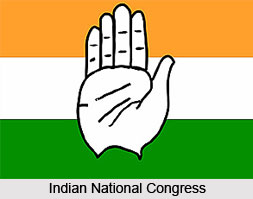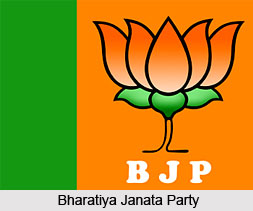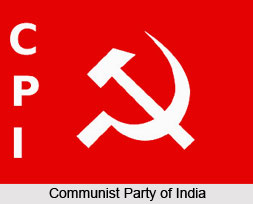 Indian political culture has gone through varied changes since the pre independence era till the contemporary time. India arrived at Independence after a long struggle and with a multiplicity of heritages and legacies which influenced its post-Independence course in intricate ways. Amongst the legacies was the long experience of British rule, which extended back more than two centuries. Of particular importance at Independence was the Government of India Act of 1535, which was the most recent structure of rule under which the country was governed and which included a substantial measure of responsible government for Indians in the provinces. A second legacy was that provided by the shared experience of those Indians who participated in or identified with the nationalist movement and its great leaders. A third was the prevailing social order, the communal structure and social conflicts which surrounded and influenced political movements, thoughts, and practices. Finally, there was the great body of traditions and cultural practices which preceded British rule in a civilisation of great depth, density, and diversity.
Indian political culture has gone through varied changes since the pre independence era till the contemporary time. India arrived at Independence after a long struggle and with a multiplicity of heritages and legacies which influenced its post-Independence course in intricate ways. Amongst the legacies was the long experience of British rule, which extended back more than two centuries. Of particular importance at Independence was the Government of India Act of 1535, which was the most recent structure of rule under which the country was governed and which included a substantial measure of responsible government for Indians in the provinces. A second legacy was that provided by the shared experience of those Indians who participated in or identified with the nationalist movement and its great leaders. A third was the prevailing social order, the communal structure and social conflicts which surrounded and influenced political movements, thoughts, and practices. Finally, there was the great body of traditions and cultural practices which preceded British rule in a civilisation of great depth, density, and diversity.
Politics in India before 1947
Indian politics before 1947 dates back to the Indian Councils Act of 1861 and continues through the Morley-Minto Reforms of 1909, the Montague-Chelmsford Reforms, 1919, and the Government of India Act of 1935. At each of these reforms, the involvement of Indians in the central and state legislatures and in the executive councils was increased and the permission was extended to ever larger numbers of people. It has often been noted in particular that there was a significant degree of continuity between the Government of India Act and the Constitution of India. The features of stability included the implementation of a federal system of government with three legislative lists of powers to be exercised entirely by the Union, exclusively by the states, or concurrently, and a combination of a considerable degree of provincial autonomy with extensive powers left to the Centre, including emergency powers which made it achievable to convert the federal system into a unitary one.
Politics in India after 1947
The Constitution of independent India is federal, but contains strong unitary features, including a strong central government which holds on to not only extensive emergency powers but the residuary powers of the Union as well. The states are in general supposed to function autonomously, but the Center retains the decisive power to control, even take over the direct administration, of the states under certain conditions. In several respects, however, the Constitution of India makes a sharp break with the British colonial past, though not with British political practices.
 First of all, the Constitution adopts in total the Westminster form of parliamentary government rather than the mixed parliamentary-bureaucratic authoritarian system which in fact existed in India. Secondly, fundamental rights were incorporated in the Constitution of India. Thirdly, the Constitution introduced universal adult suffrage.
First of all, the Constitution adopts in total the Westminster form of parliamentary government rather than the mixed parliamentary-bureaucratic authoritarian system which in fact existed in India. Secondly, fundamental rights were incorporated in the Constitution of India. Thirdly, the Constitution introduced universal adult suffrage.
The Constitution also contains some distinctive features that replicate a desire to depart from strict British parliamentary practices and to bring in into the charter of the country a program of social and economic modification. Most distinguished in this respect is the presence in the Constitution of a list of both Fundamental Rights of the People and Directive Principles of State Policy, a combination of protections for the people against the encroachments of state authority with directives to the state to introduce specified reforms to make those rights successful. At Independence, therefore, the leaders of the country quite self knowingly maintained many features of the colonial legacy. They also adopted some new features derived from the political practices of Great Britain and the United States. Nevertheless, most of the specific features of the Constitution of India and the administrative structure retained or adopted at Independence represented borrowings from abroad, which had to be adapted to the social structure, traditions, and practices of a completely different society.
Contemporary Politics of India
Caste and religion are an important part of politics in India and these factors to a great extent helps to shape the political culture of the country. There are several communities, minorities and castes which greatly influenced the contemporary political scenario of India. After independence the federal government of India has been led by the Indian National Congress. Contemporary politics of India have been dominated by a number of national parties including the INC, the Bharatiya Janata Party (BJP), the Communist Party of India (Marxist) (CPI (M)) and various regional parties. From 1950 to 1990, except for two brief periods, the INC enjoyed a parliamentary majority. In 1989, a Janata Dal-led National Front coalition in alliance with the Left Front coalition won the elections but managed to stay in power for only two years. As the 1991 elections gave no political party a majority, the INC formed a minority government under Prime Minister P.V. Narasimha Rao and was able to complete its five-year term.
The years 1996-1998 were an epoch of chaos in the federal government with a number of temporary alliances holding sway. The BJP formed a government for a short time in 1996, followed by the United Front coalition that excluded both the BJP and the INC. In 1998, the BJP formed the National Democratic Alliance (NDA) with some other parties and became the first non-Congress government to complete a full five-year term of governance. In the year 2004 Indian elections, the INC won the largest number of Lok Sabha seats and formed a government with an alliance called the United Progressive Alliance (UPA), which was supported by various Left-leaning parties and members opposed to the BJP. The UPA again came into power in the 2009 general election; though, the representation of the Left leaning parties within the coalition has considerably reduced. Manmohan Singh became the first prime minister since Jawaharlal Nehru in 1962 to be re-elected after completing full five-year tenure.
Political Figures of Indian Politics
 Mahatma Gandhi is the most prominent political figure of India. He was the pioneer of satyagraha movement which was the resistance to tyranny through mass civil disobedience, a philosophy firmly founded upon ahimsa or total non-violence, which led India to independence and inspired movements for civil rights and freedom across the world. Jawaharlal Nehru was the first prime minister of India and he greatly influenced the political history of the country. He was simply the natural choice as the acknowledged leader of the Congress and the chosen political heir of Mahatma Gandhi. Nehru`s individuality, attitudes, and approach of leadership influenced greatly all aspects of the functioning of the Indian political system during the period of his dominance. His daughter Indira Gandhi was also successful in occupying a position of centrality and dominance in the Indian political system that appeared to equal or even outshine that of her father.
Mahatma Gandhi is the most prominent political figure of India. He was the pioneer of satyagraha movement which was the resistance to tyranny through mass civil disobedience, a philosophy firmly founded upon ahimsa or total non-violence, which led India to independence and inspired movements for civil rights and freedom across the world. Jawaharlal Nehru was the first prime minister of India and he greatly influenced the political history of the country. He was simply the natural choice as the acknowledged leader of the Congress and the chosen political heir of Mahatma Gandhi. Nehru`s individuality, attitudes, and approach of leadership influenced greatly all aspects of the functioning of the Indian political system during the period of his dominance. His daughter Indira Gandhi was also successful in occupying a position of centrality and dominance in the Indian political system that appeared to equal or even outshine that of her father.




















